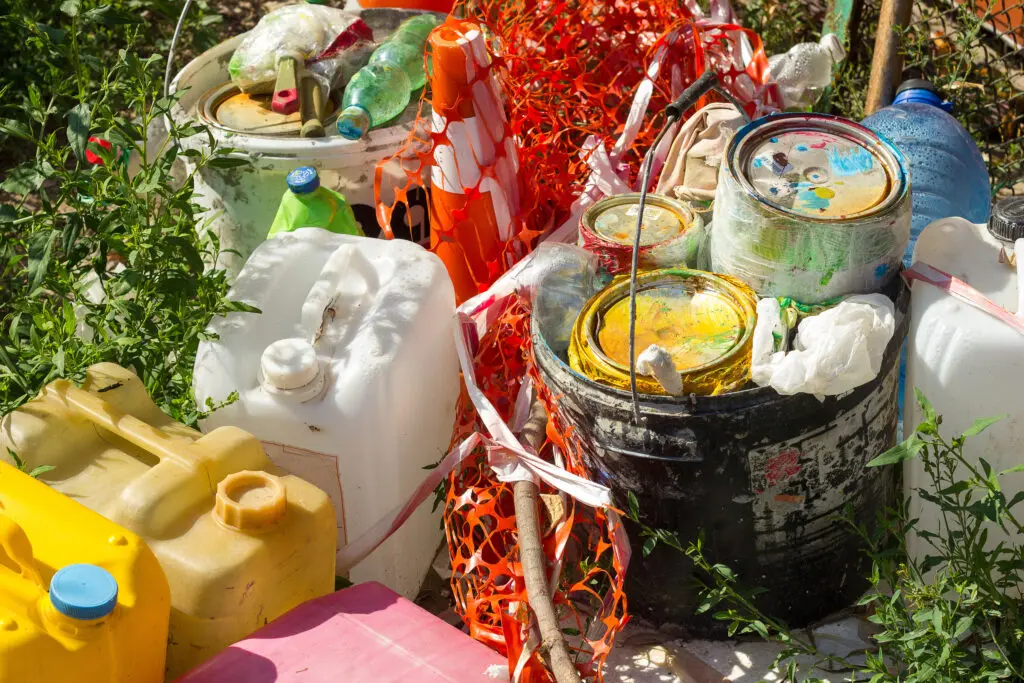If you’re a homeowner, hazardous materials are a serious concern. Whether you’re buying an older home or worry about the introduction of such materials in a newer construction, it’s important to understand what these hazards are, how they’re handled, and what you can do about them.
Do home warranties cover hazardous materials?
No, most home warranties don’t cover issues caused by hazardous materials. Likewise, a home warranty will not cover the removal or disposal of these materials. This includes the home warranty plans offered by SHW.
Hazards excluded from home warranty coverage may consist of toxic chemicals, lead, carbon monoxide, gas leaks, and other hazardous contaminants, such as acids and asbestos.
With that in mind, home warranties still cover a lot. Learn what’s covered by a home warranty.
What hazardous wastes are common in ordinary households?
According to the EPA, hazardous wastes have properties that make them dangerous to humans. As a result, they tend to have a damaging effect on human health and even the environment.
When looking at household hazardous waste – or HHW – the EPA views certain home products that may be corrosive, toxic, explosive, reactive, or flammable as part of this category.
Hazardous wastes can range from the chemicals under your kitchen sink to asbestos insulation or lead paint in your walls. The list of common hazardous wastes can be extensive, including motor oil, paints, household cleaners, pesticides, and even batteries.
Why is it important to handle household hazardous wastes?
Due to the health risks, it’s essential that HHW is handled with care. Many of these materials and chemicals can be corrosive, flammable, poisonous, toxic, or highly reactive. Some are even explosive. They can cause serious injury and even death if not dealt with mindfully.
If you have an older home, you may have hazardous materials such as lead or asbestos within your home. It’s important to leave the removal of these materials to experts. When in doubt, search locally for professionals specialized in the handling and disposal of hazardous wastes. Don’t take the risk yourself.
How do you avoid hazardous chemicals and materials at home?
The best way to keep hazardous wastes and harmful materials out of your home is to avoid using them in the first place.
Use a plunger or drain auger instead of chemicals to unclog your drain. Rely on safer solutions for cleaning your home, such as baking soda to deodorize rugs and carpets, or a mixture of vinegar and water to wash windows.
The EPA also has a website – Safer Choice – that can help you find home products with safer ingredients. Be sure to check it out!
Of course, not all harmful waste in your home is something you brought in yourself. In these cases, you may be looking at ways to have these hazards removed completely.
How do you handle harmful materials at home?
For the chemicals, cleaners, and other health hazards you bring into your home, be sure to read the instructions for use and storage carefully. These products should also have clear directions for disposal, as well as the risks in using these products, right on the label.
Never mix chemicals and other hazardous materials with each other. Likewise, always store them in the original container they came in.
Your local community may have programs for the collection of hazardous wastes and chemicals. Whether it’s a collection site or a recurring event, it’s worth checking locally to see what options are available.
Try searches like “waste disposal near me,” “hazardous waste disposal near me,” “household hazardous waste collection,” and “hazardous waste collection programs” in Google or your preferred search engine to see if anything local comes up.
Home warranties don’t cover hazardous materials, but…
They still offer significant protection for home systems and appliances that can’t be beat.
If you’re concerned about the impact of dangerous wastes and other hazards in your home, you clearly value peace of mind. A home warranty gets you just that, regardless of whether you’re buying your first home or selling your current one, protecting systems and appliances at a fraction of the cost it would take to repair or replace them.
See our plans to find the right coverage for you and get a free quote! There’s no obligation, and you’ve got nothing to lose.
Have questions? Reach us at 800-670-8931, and we’ll help you choose the best plan for your needs.

